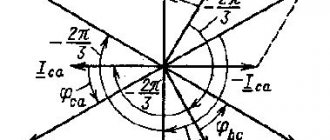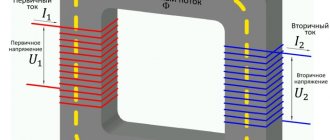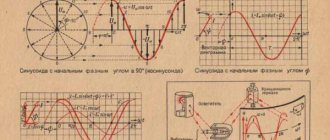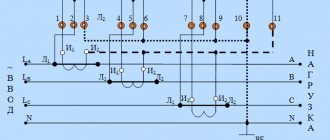Today, the topic of renewable energy sources (RES) is of interest not only to professionals, but also to ordinary people. There is a lot of talk about it in the news, and environmentalists are calling on heads of state to switch to green technologies as soon as possible in order to stop the climate crisis. Many countries, including the European Union, have already begun to implement their own Green Deal programs, where renewable energy sources play a key role.
The topic of renewable energy sources also causes a lot of controversy in various circles: “If such energy does not harm the planet, why do we still use coal, oil and gas?” or “I heard it’s very expensive, these green corporations just want to deceive us.”
And if in the West, and in many other countries, this stage has already been passed, then for Russia RES is often perceived as something new.
Moreover, according to skeptics, “new technologies” have not yet proven their effectiveness. But is it?
New or well forgotten old
In fact, renewable energy is the oldest and safest way to generate energy . For centuries, renewable energy was the only available source of energy for the inhabitants of the Earth, if you do not take the muscular power of man and animals themselves. But fossil energy sources took over only during the Industrial Revolution - the whole point is that they simply turned out to be more profitable at a certain stage in the development of civilization. However, at that time no one imagined that coal, oil, and then gas would cause irreparable damage to the planet’s climate in literally just a hundred years. Thus, fossil fuels turned out to be a time bomb, and centuries-old renewable energy sources fell by the wayside for many years.
To understand all the intricacies of the topic of renewable energy, we have prepared for you a series of materials, the first of which we devote to the history of the emergence of renewable energy sources. In it we will discuss the history of the three most widely mentioned types of renewable energy - solar, wind and hydropower , in order to see what a huge path our civilization has come in the field of green technologies.
Wind power
The history of renewable energy sources is a history of great discoveries that began even before the beginning of our era. For thousands of years, people have been looking for ways to generate energy in new ways. Man's use of wind dates back to ancient times. Let's remember the sailing ships of Ancient Egypt, Greece and other civilizations that people used 5,500 thousand years ago. Later, mills and natural ventilation began to appear.
Windmills were used for centuries in the East (in China, Persia and other countries) and only by the 10th-12th centuries they migrated to Europe, where they became especially widespread in the territory of the modern Netherlands and a number of other northern countries. In countries with low temperatures, this method of generating energy had a serious advantage over using the kinetic energy of water, which could freeze in winter. Mills have been used for centuries without major modifications.
It wasn't until 1854 that Daniel Halladay came up with a self-regulating wind pump and a system where the mill could automatically turn in the direction of the wind. At the same time, the wooden blades were replaced with metal ones.
The year 1887 was also a turning point, when the world's first wind turbine was created, which could be used to generate electricity. Scottish scientist James Blyth used it to illuminate his own house (he even offered the excess electricity to the residents of his street, but they refused). Thus, he became the first person in the world to independently provide himself with electricity using wind energy. The very next year, the first wind generator appeared in the USA. Charles Brush designed a more complex and larger wind generator to also supply electricity to his home. His Brush Electric Company in Ohio was sold in 1889, and in 1892 merged with the Edison General Electric Company to form the legendary General Electric Company.
In 1891-1895, the Danish scientist Paul La Cour developed and improved this technology and introduced a wind generator to society that provided stable voltage. Subsequently, he created a prototype of a power plant to illuminate not just one house, but an entire village.
In the twenties of the last century, the French scientist George Darrieus invented the first vertical turbine (it was patented in the USA only in 1931). The shape of the blades was quite different from the blades of modern vertical turbines. They are also called orthogonal wind generators.
And already in the 1930s, scientists Joe and Marcellus Jacobs from the USA opened the first factory for the production and sale of small wind turbines in Minneapolis - Jacobs Wind (now it is the oldest company in the USA that creates equipment for renewable energy). In rural areas of the United States, farmers used them primarily for lighting.
By the way, the Yalta wind engine is often called the predecessor of modern windmills, which had serious power not only for that time, but also for today. Moreover, its performance was very close to that of modern wind generators.
In 1941, the world's first one-megawatt wind turbine was launched (in Vermont, USA). The structure was connected to the local power grid. By 1957, the same Jacobs Wind company had already sold 30,000 turbines to various parts of the world. But the turning point year in the development of wind energy was 1973, when an oil embargo was declared by oil suppliers and oil prices soared. This has generated great interest in alternative energy sources. And already in 1980, the world's first wind power plant with 20 turbines opened (USA).
Subsequently, wind energy developed much more rapidly. By the 1980s, the United States, with the support of the National Science Foundation and the Department of Energy, was already conducting serious research in the field of wind generation. It was during this period that new technologies appeared in the construction of wind generators, and their unit power reached the megawatt class. This was achieved by studying the aerodynamics of wind turbines. Then it became clear that generating energy using wind could become truly large-scale. And already in 1991, the world's first offshore floating wind farm opened in Denmark, and in the UK, an onshore wind farm.
In 2022, energy company Equinor received permission to build the world's largest floating offshore wind farm in the Tampen area of the North Sea. It is expected that such a power plant will be able to provide electricity to at least 4.5 million homes.
Solar energy
While wind energy has tended to be modified and improved, things are different with solar energy. Here, discoveries by scientists over the past decades have radically changed the way we use sunlight.
Ancient people used sunlight to heat food, heat their homes, and make fires. In the first centuries AD - 100-400 - solar heating of water became popular. The Roman architect Vetruvius, after a trip to Greece, where houses were already built on the south side for additional heating by heating the wall and the entire building with the sun's rays, decided to apply this idea in Rome. This is how the Roman baths were improved, which were also heated by the sun.
It is difficult to estimate when humanity came up with the idea of using solar radiation to generate electrical energy. If we go back to the very origins of the trend, it is worth remembering Alexandre Becquerel, who back in 1839 studied the effect of light on electrolytes. By the way, mirrors and lenses were used for studying. Using a special solution (based on silver chloride and an acid solution), he managed to create a cell that not only heated up, but produced electrical energy.
But the real breakthrough came in 1860, when the Frenchman Augustin Mouchot invented the world's first solar energy system. Following his predictions that one day our coal supplies would run out, Musho tested his “solar meter.”
The first to discover solar panels was Charles Fritz, who in 1883 created his own tabletop power station: it was powered by a small gold-plated selenium plate. And within a year he installed solar panels on a roof in New York.
Subsequently, the emergence of modern theoretical physics helped create the basis for a deeper understanding of photovoltaics - the production of electrical energy from solar radiation. Already in 1888, physicist Wilhelm Hallwachs described the physics of photovoltaic cells in the so-called Hollwachs effect. And just 7 years later, Albert Einstein published “On a Heuristic View of the Production and Transformation of Light,” in which he explained how light creates an electric current by knocking electrons out of atoms in certain metals. Subsequently, he also gave the theoretical basis for photovoltaics, on the basis of which solar energy was subsequently developed.
In 1916, chemist Jan Czochralski invented a method for creating single crystals of the metal. This became the basis for the creation of semiconductor wafers, which are still used in electronics today, including solar cells.
But the beginning of the use of solar panels, as we know them now, happened only in the middle of the 20th century. The American company brought solar energy to the commercial market. Back in 1941, company engineer Russell Ohl filed a patent for the first monocrystalline silicon solar cell. And he did not lose, since in the post-war period there was an energy shortage.
And in 1954, the company sold its first efficient silicon solar cell. Of course, it was not as productive as modern solar panels (efficiency - only 6 percent), but they still became so popular that the rapid development of the industry began: within a few years, the first solar-powered spacecraft was created and traveled around London the first car with solar panels on the roof. Moreover, just 8 years later, Bell laboratories were already powering the first solar-powered communications satellite.
In the early 1960s, Zhores Alferov and Herbert Kroemer independently proposed a scientific solution that made it possible to dramatically increase the efficiency of solar panels using semiconductor heterostructures. In 2000, scientists were awarded the Nobel Prize for the development of the physics of semiconductor heterostructures. Perhaps not everyone knows, but the Soviet spacecraft Soyuz-1 became the first solar-powered spacecraft with a person on board.
At the moment, countries such as the USA, China and many others are actively developing solar energy. One of the drivers of such support was the issue of climate change. Constant climatic anomalies that affect both the lives of people and the economies of entire countries have forced us to turn to solar energy, which has been used for centuries and which provides potential for further development.
Hydropower
Hydropower is a branch of energy associated with the conversion of the kinetic energy of water flow into mechanical and electrical energy. The use of water energy also dates back to ancient times.
It all started around the 1st century BC, when the ancient Greeks began using the first water wheel to grind wheat. At the same time, a similar invention appeared in China.
Of course, this was the simplest form of harnessing water energy, but it was the prerequisite for modern technological advances in hydropower.
The water wheel, with a number of modifications, has been used for dozens of centuries.
By the 13th century, it was already used in the production of gunpowder and steel, which helped Medieval Europe become a leader in the military sphere. By the 17th century, this type of energy played a decisive role in the American and European technological revolution; it was already used in numerous enterprises: in the sawmill, textile industry and many others.
But everything changes in the 19th century. In the years 1827-1831, several major discoveries occurred at once. French engineer Benoit Fourneyron creates his first prototype of a new model of water wheel called "turbine 5". And in 1831, the English physicist Michael Faraday discovered electromagnetic induction and developed the world's first transformer and electric generator - the foundations of power generation and modern power engineering.
In 1878, while scientists were improving turbine models, English engineer and industrialist William Armstrong combined the work of his predecessors and built the world's first small hydroelectric power station.
A decade later, in 1891, a real scientific revolution took place in the transmission of electrical energy and hydropower after the Russian inventor Mikhail Osipovich Dolivo-Dobrovolsky (worked in Germany) created work on the transmission of three-phase current. His transformer design is still used today without significant changes. The first transmission of electrical energy with high-voltage three-phase current took place at an exhibition in Frankfurt. A fountain was installed there, which was driven by a hydraulic pump and a Dolivo-Dobrovolsky engine. It was the most powerful three-phase asynchronous motor in the world at that time (the modern history of electrification began with this discovery).
1913 Austrian professor Victor Kaplan invents the Kaplan turbine, a propeller-type turbine with adjustable blades.
Also a major breakthrough was the conversion of tidal energy from the world's oceans into electricity - in 1966, the world's first tidal power station, La Rance, opened in France.
Greenpeace, regarding hydroelectric power stations on rivers, supports the development of only small hydroelectric power stations.
The thing is that large dam hydroelectric power plants on rivers (with an installed capacity of 25 MW or more) not only change river ecosystems for the worse and lead to the disappearance of populations of valuable fish, but also exacerbate competition between water users. In addition, artificial reservoirs created to operate hydroelectric power plants can be a significant source of greenhouse gas emissions.
Current estimates suggest that, in some cases, such mid-latitude reservoirs could emit as much greenhouse gas as their tropical counterparts. Therefore, despite the fact that greenhouse gas emissions can vary greatly from one hydroelectric power station to another, the presence of the potential for serious emissions from the reservoirs of large hydroelectric power stations also does not allow such projects to be classified as low-carbon .
What will happen next
Renewable energy sources have had a long history of development, but only in the last decade they began to develop rapidly in connection with the global fight against the climate crisis.
However, in Russia, modern renewable energy sources are still at the initial stage of development.
Greenpeace fully supports the transition to green energy. That is why we compiled a rating of Russian regions, in which we analyzed how ready Russia is for the transition to green technologies and the Green Deal program, including renewable energy sources.
In 2022, Greenpeace experts presented the Green Deal program, which will help the country emerge not only from the economic crisis, but also from the climate crisis. The program was compiled by Greenpeace based on proposals from more than 150 public organizations and is designed to change the situation in Russia at the systemic level.
Want more texts like this? Support the work of Greenpeace.
climate energy
Generation of electrical energy. Transformers
In this topic we will talk about methods of generating electrical energy. We will also study the structure of a simple transformer.
Electromagnetic induction
– this phenomenon lies in the fact that with any change in the magnetic flux penetrating the circuit of a closed conductor, an electric current arises in this conductor, existing throughout the entire process of changing the magnetic flux.
And the current obtained in this way is called induced current
.
Variable
is called
a current
that changes periodically with time.
In order for a sinusoidal alternating current
, the source in this circuit must create an alternating electric field that changes sinusoidally.
In practice, sinusoidal EMF is created by alternating current generators
operating in power plants.
Generators
- These are electrical machines that
convert mechanical energy into electrical energy
.
Generators include voltaic cells, electrostatic machines, thermopiles, solar panels, etc.
Currently, the possibilities of creating fundamentally new types of generators are also being explored.
. For example, fuel cells are being developed and are already partially used, in which the energy released as a result of the reaction of hydrogen with oxygen is directly converted into electricity.
The scope of application of different generators is different and is determined by their characteristics. For example, electrostatic machines create a high potential difference, but they are not capable of creating any significant current in the circuit. Galvanic elements, on the contrary, can produce a large current, but their duration is short.
In modern energy, induction alternating current generators are used, which use the phenomenon of electromagnetic induction. Such generators make it possible to obtain large currents at a sufficiently high voltage.
In the previous topic, the simplest model of such a generator was considered - a frame with current rotating in a uniform magnetic field around its axis.
induction generators available today
. But they all consist of the same basic parts.
Previously, we considered an example of obtaining an induced current in a flat circuit when it rotates in a magnetic field. An electromechanical alternating current generator operates on this principle. The stationary part of the generator, similar to a magnet, is called the stator, and the rotating part, i.e. the frame, is called the rotor.
Powerful industrial generators use an electromagnet instead of a permanent magnet.
The gap between the stator and rotor cores is made as small as possible to increase the flux of the magnetic induction vector.
In the generator model we considered earlier, a wire frame rotates, playing the role of a rotor.
Of course, one could do the opposite, i.e. rotate the magnet and leave the frame motionless. In large industrial generators, it is the electromagnet that is driven into rotation.
.
Industrial generator stator
It is a cylindrical steel frame (
the bed
is the main load-bearing part of the machine on which various working units, mechanisms, etc. are mounted).
In its inner part, grooves are cut into which a thick copper wire
.
It is in them that an alternating electric current is induced when the magnetic flux penetrating them changes. The magnetic field is created by the rotor
.
It is an electromagnet
: a winding is put on a steel core of complex shape, through which a constant electric current flows. The current strength in the windings of the electromagnet that creates the magnetic field is significantly less than the current supplied by the generator to the external circuit. Therefore, it is more convenient to remove the generated current from stationary windings; and through sliding contacts supply a relatively weak current to a rotating electromagnet. Current is supplied to this winding through brushes and rings from an external DC source called the exciter.
The figure shows the complete circuit of the alternator. When the rotor rotates by any external mechanical force, the magnetic field it creates also rotates. In this case, the magnetic flux penetrating the turns of the stator winding periodically changes, as a result of which an alternating current is induced in them.
In thermal power plants, the generator rotor is rotated by a steam turbine; in hydroelectric power plants, by a water turbine.
Please note that the rotor of a hydrogenerator has not one, but several pairs of magnetic poles. The more pairs of poles, the higher the frequency of the alternating electric current produced by the generator at a given rotor speed
. Since the rotation speed of water turbines is usually low, multi-pole rotors are used to create a current of standard frequency.
Thus, electrical energy is produced in power plants
.
But it must somehow be transmitted to consumers, who are often located very far from the station. power lines are built between the station and the consumer
However, when transmitting electricity, losses associated with heating of the wires are inevitable. The farther the current consumer is from the power plant, the more energy is spent on heating the wires and the less reaches the consumer.
Reducing electricity losses during its transmission from power plants to consumers is an important national economic task. From the Joule-Lenz law
It follows that losses can be reduced either by reducing the resistance of the wires or by reducing the current in them.
The resistance of the wires will be lower, the larger their cross-sectional area and the lower the resistivity of the metal from which they are made.
Wires are made of copper or aluminum, since among relatively inexpensive metals they have the lowest resistivity.
However, increasing the thickness of the wires is not economically profitable
, because this leads to excessive consumption of expensive non-ferrous metal, as well as difficulties in securing wires to poles. Therefore, this method of reducing losses is practically impossible.
Therefore, a significant reduction in losses can only be achieved by reducing the current. But given the power, a decrease in current is possible only with an increase in voltage. Without such conversion of current and voltage, transmitting electricity over long distances becomes unprofitable due to significant losses.
Thus, electricity from the Volzhskaya HPP is transmitted to Moscow at a voltage of 500 kV, and from the Sayano-Shushenskaya HPP - at a voltage of 750 kV. Although at the power plants themselves, generators produce electrical energy at voltages not exceeding 20 kV.
The solution to this most important technical problem became possible only after the invention of the transformer
—
a device used to convert AC power and voltage at a constant frequency
.
The first transformer was invented in 1876 by the Russian scientist Pavel Nikolaevich Yablochkov to power the electric candles he invented - a new light source at that time. And the first technical transformer was first created by Ivan Filippovich Usagin in 1882.
The operation of a transformer is based on the phenomenon of electromagnetic induction.
The simplest transformer consists of two coils isolated from each other (they are also called windings), wound on a common closed core. The converted alternating current is passed through one of the windings (primary), and the secondary winding is connected to the consumer.
Alternating current in the primary winding creates an alternating magnetic flux in the core, which excites an inductive emf in the turns of each winding. A transformer steel core concentrates the magnetic field so that the magnetic flux exists almost exclusively inside the core and is the same in all its sections.
The instantaneous value of the induced emf in all turns of the primary or secondary winding is the same
. According to Faraday's law, it will be determined by the formula
e
= –F'
where Ф' is the derivative of the magnetic induction flux with respect to time.
If the primary winding has N
1 turns, and the secondary
N
2 turns, then
e
1 and
e
2 are induced in the windings (without taking into account losses due to magnetic flux dissipation), respectively, and their ratio will be equal
Those. The induction emf (or self-induction) arising in the coils is proportional to the number of turns in them
.
Typically, the active resistance of the transformer windings is small and can be neglected. In this case, the voltage modulus at the terminals of the primary winding is approximately equal to the modulus of the total induced emf.
When the secondary winding of the transformer is open, no current flows in it, therefore the total induced emf is equal to the voltage at the terminals of the secondary winding.
The change in instantaneous EMF values occurs in such a way that they simultaneously reach a maximum and simultaneously pass through zero, i.e. change in phase. Therefore, their ratios can be replaced by the ratio of the effective values of these emfs or the ratio of the effective voltage values.
The ratio of the number of turns in the primary winding to the number of turns in the secondary is called the transformation ratio
k
.
Depending on the value of the transformation ratio, a step-up and step-down transformer
.
It is usually determined when the transformer is no-load, i.e. with the secondary winding circuit open.
If the transformation ratio is less than one, then the transformer is called a step-up transformer, and if it is more than one, then it is called a step-down transformer.
When any load is connected to the secondary circuit (this is the operating stroke of the transformer), the load current
(it is variable and of the same frequency). This current creates a magnetic flux in the core, directed according to Lenz's rule towards the flux of the primary winding. As a result, the total flux of magnetic induction in the primary coil decreases, the EMF also decreases, and, consequently, the current strength will increase. This increase in current in the primary circuit leads to an increase in magnetic flux, induced emf and current in the secondary circuit. But, as we know, an increase in the current in the secondary circuit is accompanied by an increase in the self-induction current and, consequently, a decrease in the magnetic flux that has just increased.
Ultimately, with a constant load, a certain magnetic flux, induced emf in the secondary circuit and current in the primary circuit are established. It turns out that the transformer itself automatically regulates energy consumption depending on the load in the secondary circuit.
During the operating stroke of the transformer, there is a continuous transfer of energy from the primary circuit to the secondary circuit.
The power consumed in the primary circuit will be determined by the formula
and allocated at the load
The efficiency of the transformer will be determined by the ratio of the power released at the load to the power consumed in the primary circuit.
However, not all the energy generated by the generator is transferred to the consumer. During operation of a transformer, there are losses due to heating of the transformer windings, to the dissipation of the magnetic flux into space, to Foucault eddy currents in the core and its magnetization reversal.
To reduce these losses, the following measures are taken:
1) the low voltage winding is made of a larger cross-section, since a greater current passes through it;
2) the core is made closed, which reduces magnetic flux dissipation;
3) the core is made of insulated plates to reduce Foucault currents.
Thanks to these measures, the efficiency of modern transformers reaches 95-99%
, and
the phase shift
between current and voltage fluctuations
is close to zero
.
If sometimes losses in a transformer can be neglected, i.e. Considering its efficiency equal to 100%, then the power consumed in the primary circuit will be equal to the power allocated to the load. Then the ratio of the current in the primary winding to the current in the secondary winding will be inversely proportional to the corresponding voltages
. This means that by increasing the voltage with the help of a transformer, we will decrease the current strength by the same amount and vice versa.
Currently, transformers are widely used both in technology and in everyday life. For example, to transmit electricity over long distances, both step-up and step-down transformers are used (by the way, we will talk about this in more detail in one of the following lessons). When recharging a cell phone, the transformer in the charger lowers the voltage received from the lighting network up to 5.5V suitable for telephone. The TV has several transformers (both step-down and step-up), since voltage from 1.5 V to 25 kV and so on is required to power its various components.
Main conclusions:
– Alternator
- a device that converts mechanical energy into electrical energy.
– In modern energy, induction generators
, whose operation is based on
the phenomenon of electromagnetic induction
, and allowing one to obtain large currents at a sufficiently high voltage.
the rotor remains unchanged in each of them
- the moving part of the generator, and
the stator
- the stationary part of the generator.
– Transformer
– a device used to convert the power and voltage of alternating current at a constant frequency.
– The transformer is characterized by its transformation ratio
, i.e. the ratio of the number of turns in the primary winding to the number of turns in the secondary winding.
– Depending on the value of this coefficient, there are increasing
and
step-down
transformers.
Interesting publications
Another batch of regenerated uranium was brought to Russia On the night of February 9, the ship Frisian Summer arrived at the port of Ust-Luga, Leningrad Region...
Vladimir Chuprov 09/02/2022
Why is nuclear energy harmful? Can it be simpler? Hello. I am Pasha Dorofeev, recently the media coordinator of the climate project of the Russian branch of Greenpeace. Now…
Pavel Dorofeev 03/02/2022
A “black sky” regime has been introduced in my city - what should I do? On January 14, a “black sky” regime was introduced in Krasnoyarsk and other Siberian cities. Almost every…
Victoria Glushchenko 28/01/2022
Saving the climate: 5 reasons why nuclear energy won’t work Today the thesis is often heard that nuclear energy will become the savior of the climate, and it needs to be included in…
Vladimir Chuprov 21/01/2022
Gas and nuclear energy: why the EU cannot recognize them as “green” On New Year’s Eve, when most people gather with family and loved ones at the festive table, the European...
Pavel Dorofeev Vladimir Asikritov 01/14/2022
Types of activities in the electric power industry
Electric companies are engaged in the uninterrupted delivery of electricity to every consumer. In the energy sector, the employment level exceeds that of some leading sectors of the state's national economy.
Operational dispatch control
TAC plays a critical role in the redistribution of energy flows in an environment of changing consumption levels. Dispatch services are aimed at transmitting electric current from the manufacturer to the consumer in a trouble-free manner. In the event of any accidents or failures in power lines, the ODU performs the duties of the operational headquarters to quickly eliminate these shortcomings.
Energosbyt
Tariffs for payment for electricity consumption include costs for the profits of energy companies. The correctness and timeliness of payment for consumed services is monitored by the Energosbyt service. The financial support of the entire energy system of the country depends on it. Penalties are applied to non-payers, up to and including disconnecting the consumer's power supply.
The energy system is the circulatory system of a single organism of the state. Electricity production is a strategic area for the security of existence and development of the country’s economy.










